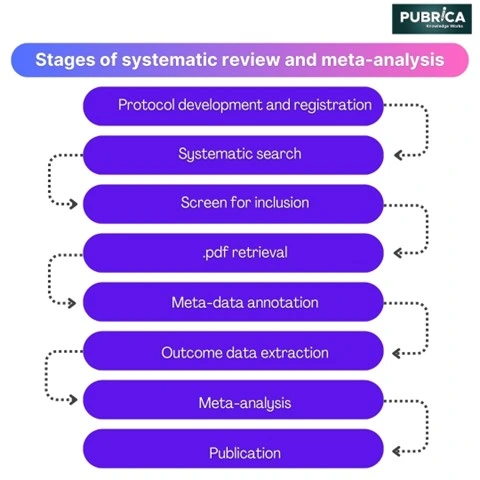Data extraction is like gathering supplies for a journey, while bias assessment is like charting a safe course. CHARMS helps gather data efficiently, like a well-prepared sailor stocking up on provisions. Meanwhile, PROBAST acts as a lookout, helping spot and avoid biases that could throw us off course. These frameworks simplify our tasks, making research smoother. [1]
Data Extraction and Bias Assessment in Research: The Role of Tools like CHARMS and PROBAST
In the systematic review process, data extraction means collecting important information from different studies and organizing it neatly. This can take a lot of time, and mistakes can happen, especially when there are many studies to go through. Researchers often need help gathering data in the same way across different reviewers and making sure it’s accurate and complete.
Bias assessment is about checking if there are any factors in the studies that could make the results less reliable. This step is important to determine whether the evidence is trustworthy. It takes work because it involves understanding research methods and statistics.
To make these tasks easier, researchers have created tools like CHARMS and PROBAST. CHARMS helps collect data from prediction modeling studies in a standard way, and PROBAST helps check if prediction models have biases. These tools provide clear steps to follow, which saves time and ensures the review is done well. They help researchers be consistent and reduce mistakes.

How CHARMS simplifies the process and improves consistency
CHARMS provides a structured approach to data extraction, ensuring that all relevant information is captured consistently. It helps researchers collect data from prediction modeling studies in a constructed way. It has a checklist that guides reviewers on what information to gather. This checklist ensures that everything important is noticed, making the results more trustworthy.
One great thing about CHARMS is that it makes sure all reviewers follow the same standards. This reduces differences between reviewers, which is important in systematic reviews where many people are involved.
CHARMS is also flexible and can be used for different types of studies. It’s not limited to one field, so it’s useful for various research questions.
CHARMS helps with data extraction and estimates bias in studies. It includes a feature to detect bias, which enhances transparency and accountability in the review process. [3]
How PROBAST streamlines bias assessment and enhances validity
PROBAST helps researchers check for bias in prediction model studies. It looks at four areas: who was chosen for the study, the factors being predicted, the outcomes measured, and how the analysis was done. By systematically examining these areas, researchers can spot biases that affect the prediction model’s credibility.
One great thing about PROBAST is that it guides researchers through the evaluation process. It provides clear questions for each area, making sure everything important is noticed.
PROBAST also helps with reporting bias in a standardized way. This allows researchers to quantify the degree of bias in each study, making it easier for others to understand and trust the findings.
Using PROBAST helps researchers check for bias thoroughly, making their reviews more reliable. It makes sure biases aren’t overlooked, which makes the findings more reliable for making decisions based on evidence. [2]








Leave a Comment